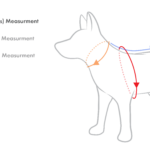Why Does My Dog Eat Acorns
Why Does My Dog Eat Acorns: Exploring the Reasons and Risks
If you’ve ever seen your dog munching on acorns in the yard, you might wonder why they do it and whether it’s safe or normal. While dogs are known for their curious and sometimes quirky behavior, eating acorns can pose some health hazards that pet owners should be aware of. In this article, we’ll delve into the reasons why dogs eat acorns, what effects it may have on their health, and what you can do to prevent or address this issue.
Subtitles:
1. The fascination of acorns: a dog’s perspective
2. The risks of eating acorns for dogs
3. The potential health problems caused by ingesting acorns
4. How to prevent your dog from eating acorns
5. What to do if your dog has eaten too many acorns
From a third-person perspective, let’s imagine that you’re a dog walking in a park or a backyard full of oak trees. As you sniff around, you notice these small brown things dropping from above, bouncing on the ground, and rolling away. They smell earthy and woody, and seem crunchy enough to chew. You try one out, and find that it tastes bitter but not too bad. You swallow it down, feeling a bit curious and satisfied at the same time.
However, unbeknownst to you, those innocent-looking acorns contain tannins and other compounds that can cause gastrointestinal distress and even poisoning in dogs who eat them in large amounts or over time. Some dogs may also choke on the hard shells or suffer from intestinal blockages if they swallow too many whole acorns without enough water or fiber to digest them properly.
To avoid these risks, pet owners need to be vigilant about their dogs’ eating habits and environment. If your dog shows signs of nausea, vomiting, diarrhea, lethargy, abdominal pain, or loss of appetite after eating acorns, you should contact your veterinarian immediately. These symptoms could indicate a range of health issues, from mild irritation to severe toxicity.
To prevent your dog from eating acorns, you can take several measures:
– Train your dog to “leave it” or “drop it” when they try to pick up objects from the ground that are not meant for them.
– Keep your yard or park free of fallen acorns by raking them up regularly or using a leaf blower.
– Use a basket muzzle or a cone collar if your dog has a habit of scavenging or chewing on non-food items.
– Provide plenty of fresh water and fiber-rich food to help your dog digest any small pieces of acorns they may have ingested.
If your dog has already eaten too many acorns and is showing signs of distress, here are some steps you can take:
– Monitor their symptoms closely and document them for your vet’s reference.
– Offer them small amounts of bland food like boiled chicken and rice to soothe their stomach.
– Encourage them to drink water frequently but in small sips.
– Take them to the vet as soon as possible for a physical exam and possible treatment, such as fluid therapy, anti-nausea medication, or activated charcoal.
In conclusion, while dogs may find acorns fascinating and tasty at first glance, pet owners need to be aware of the potential risks and hazards involved in eating these nuts. By taking preventive measures and seeking timely veterinary care if needed, you can help keep your furry friend healthy and happy. And who knows, maybe you can also find some safer and more enjoyable treats for your dog to chew on instead!



